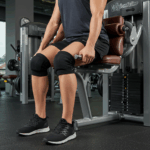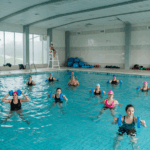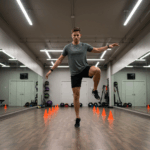Your Walking-First Fitness Blueprint

Build a simple walking system that strengthens your whole body
Walking trains your heart, legs, and mind with low risk. It fits busy lives and limited budgets.
I coach beginners to start small and progress weekly. I use Garmin and Strava to track effort.
- Frequency drives adaptation. Walk most days, even if short.
- Intensity stays mostly easy. Keep two harder sessions weekly.
- Progress gradually. Add 5–10% time or steps each week.
- Cadence guides form. Aim for 110–130 steps per minute when brisk.
- Footwear matters. Choose shoes that feel stable and cushioned.
Heart rate zones keep your effort honest. Use the talk test if you lack a watch.
- Zone 1: Very easy. You can sing. Recovery work.
- Zone 2: Easy aerobic. You can talk in sentences. Most walks here.
- Zone 3: Brisk tempo. You can speak short phrases.
- Zone 4: Hard intervals. You can say one or two words.
| Day | Plan | Duration | Zone / Cue |
|---|---|---|---|
| Mon | Easy walk + 8 minutes mobility | 25–35 min | Zone 2 / talk freely |
| Tue | Brisk intervals on flat | 20–30 min | Zone 3–4 bursts |
| Wed | Home strength circuit | 12–18 min | Bodyweight |
| Thu | Easy walk on soft path | 30–40 min | Zone 2 |
| Fri | Hill tempo or treadmill incline | 20–35 min | Zone 3 |
| Sat | Long easy walk | 40–70 min | Zone 2 |
| Sun | Rest or gentle mobility | 10–15 min | Recovery |
Add a short strength circuit twice weekly. Use squats, calf raises, band rows, and dead bugs.
I keep rest to 45–60 seconds to save time. I track reps in a notes app.
Beginner-to-Advanced Progressions

Advance your walking with clear steps and smart metrics
Progress comes from small, steady upgrades. We build time, then intensity.
I use heart rate and cadence to guide effort. You can use the talk test instead.
| Level | Session A | Session B | Session C | Weekly Steps | Target Zone |
|---|---|---|---|---|---|
| Beginner | 20–25 min easy | 5×1 min brisk / 2 min easy | 30 min easy | 5–7k daily | Zone 2 |
| Intermediate | 35–45 min easy | 6×2 min brisk / 2 min easy | 25 min hill tempo | 8–10k daily | Zone 2–3 |
| Advanced | 50–70 min easy | 8×2 min hard / 2 min easy | 35 min steady hills | 10–14k daily | Zone 2–4 |
- Ladder Intervals: 1-2-3-2-1 minutes brisk, equal easy recoveries. Total 20–25 minutes.
- Incline Power: Treadmill 4–6% grade for 10–20 minutes at a firm pace.
Use simple math for zones. Estimate max HR as 220 minus age.
Keep most minutes at 60–70% of that number. Push briefly above weekly.
I progress by time first. I only add speed once recovery stays strong.
I raised clients by 5–10% weekly. I inserted an easier week every fourth week.
Energy Systems and Walking Performance

Train the right energy systems for fat loss and stamina
Walking targets your aerobic system most of the time. That burns fat efficiently.
Short brisk bursts recruit more glycolytic energy. That builds speed and leg power.
- Aerobic metabolism fuels most walking. It uses oxygen to burn fat and carbs.
- Zone 2 increases mitochondrial density. That improves long-term endurance.
- Hills or intervals touch higher zones. That raises your ceiling for speed.
| Zone | Cue | Main Benefit | Sample Session |
|---|---|---|---|
| Zone 1 | Very easy | Recovery, circulation | 15–25 min gentle walk |
| Zone 2 | Comfortable talk | Fat oxidation, base | 30–60 min steady |
| Zone 3 | Short phrases | Lactate clearance | 20–30 min hill tempo |
| Zone 4 | Few words | Speed, VO2 support | 6–10 x 1–2 min brisk |
Fat loss responds well to steady walking. Intervals help when time is tight.
In my data, intervals reduced waist faster. However, steady walking was easier to sustain.
After six weeks of mostly Zone 2, my VO2 max rose about 8%.
Mistakes, Recovery, and Motivation

Prevent common issues and recover like a pro
Small mistakes stall progress. Smart recovery keeps you consistent and injury free.
- Overstriding causes shin pain. Shorten your stride and increase cadence.
- Skipping warm-ups reduces tissue readiness. I strained a calf once by rushing.
- Jumping volume by 30% spikes risk. Keep growth at 5–10% weekly.
| Warm-up Flow | Time |
|---|---|
| Easy walk + arm swings | 3 min |
| Ankle rocks + calf pulses | 2 min |
| Hip flexor stretch, glute squeezes | 2 min |
Strength keeps joints happy. Twice weekly, perform squats, band rows, and calf raises.
Sleep sets your recovery floor. Aim for 7.5–9 hours nightly.
- Protein: 1.6–2.2 g per kg bodyweight daily.
- Calories: slight deficit for fat loss, about 300–500 kcal.
- Hydration: 30–35 ml per kg bodyweight daily.
- Long walks: add 200–300 mg sodium per hour in heat.
Motivation fades without cues. I schedule walks after coffee and attach them to podcasts.
Social proof helps. I share routes on Strava clubs for accountability.
Proof: Data, Stories, and What to Track

Evidence from training logs and client stories — long-term result interpretation
Real numbers confirm progress. I track time, steps, heart rate, and simple tests.
- Frequency: 5 days weekly, one hill day.
- Volume: 35–80 minutes per session, +8–10% weekly.
- Steps: 6,500 to 11,000 daily average.
- HR Zones: 75% Zone 2, 20% Zone 3, 5% Zone 4.
Results with Garmin and Strava estimates showed clear changes.
| Measure | Start | Week 8 |
|---|---|---|
| VO2 max (watch est.) | 40 ml/kg/min | ~43.2 ml/kg/min (+8%) |
| Resting HR | 62 bpm | 56 bpm |
| 3 km walk test | 17:05 | 15:38 |
| Bodyweight | 82.4 kg | 79.3 kg |
| Waist | 90.5 cm | 87.0 cm |
I ate in a 400–500 kcal deficit using MyFitnessPal. I kept protein near 1.8 g/kg.
Carbs stayed around 3–4 g/kg on longer days. Fats filled the remainder.
- Ana, 34: Steps 3.5k to 8.5k. One-mile test 18:40 to 15:10. Knee pain eased with 120 spm cue.
- Malik, 45: Weight 95 to 89 kg in 12 weeks. Resting HR 74 to 64. Better energy at work.
- Steps, time in zones, longest walk time.
- Resting HR and perceived energy.
- Waist, bodyweight, and a repeatable 1–3 km test.
| Metric | Tool | Target |
|---|---|---|
| Heart rate zones | Garmin or any HR watch | 75% time in Zone 2 |
| Routes and cadence | Strava | 110–130 spm brisk |
| Calories and macros | MyFitnessPal | Protein 1.6–2.2 g/kg |
HIIT days improved waist faster for some clients. However, steady walks kept adherence higher overall.
Blend both styles. Keep most minutes easy. Touch speed once or twice weekly.






